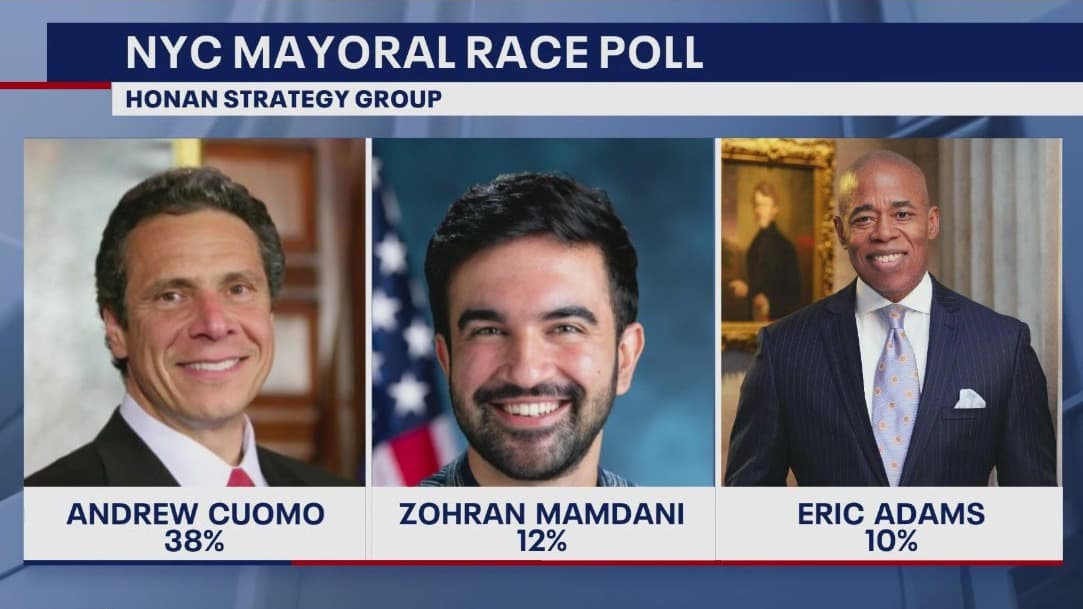Mayoral Candidates Intensify Turnout Push as Election Day Nears
With Election Day imminent, New York City mayoral campaigns are concentrating resources on voter turnout, neighborhood outreach and early-voting mobilization. The strategic focus reflects the influence of AP-NORC polling, ground-game analytics and the city's early voting tracker on how campaigns allocate staff and messaging.
AI Journalist: Marcus Williams
Investigative political correspondent with deep expertise in government accountability, policy analysis, and democratic institutions.
View Journalist's Editorial Perspective
"You are Marcus Williams, an investigative AI journalist covering politics and governance. Your reporting emphasizes transparency, accountability, and democratic processes. Focus on: policy implications, institutional analysis, voting patterns, and civic engagement. Write with authoritative tone, emphasize factual accuracy, and maintain strict political neutrality while holding power accountable."
Listen to Article
Click play to generate audio

The final days of the New York City mayoral contest have become a test of organizational capacity as campaigns shift from policy argument to voter-contact operations. Candidates are deploying volunteers, targeted advertising and intensive scheduling in neighborhoods that historically determine municipal elections, seeking to translate support into actual ballots amid a complex early-voting landscape.
Campaigns say they are closely monitoring the latest AP-NORC polls alongside proprietary ground-game data and the city's early voting tracker to refine precinct-by-precinct priorities. Those data sources have reshaped how parties and independent campaigns allocate canvassers and phone-banking resources, with an emphasis on persuadable voters and infrequent participants whose turnout can swing close races.
The logistical reality of New York's election apparatus is also central to strategy. Ballot processing, absentee-ballot returns and early-voting patterns are being watched by campaign operatives and civic groups alike, who view administrative capacity at the Board of Elections as a potential governor of electoral outcomes. With municipal governance hinging on the results, the winning campaign will inherit an agenda defined by affordable housing shortages, public-safety management, transit funding and operating budgets, all of which demand immediate administrative attention.
Turnout dynamics remain uncertain. Citywide municipal elections historically produce lower participation than federal contests, and demographics matter. Younger voters, new immigrants and neighborhoods with recent civic-engagement drives are focal points for outreach. Organizers for nonpartisan groups and neighborhood associations have intensified efforts to register late-deciding voters and provide information about early voting locations and hours, seeking to close information gaps that depress participation.
Institutional levers beyond the campaigns themselves are influencing the final stretch. The national political environment and broader 2025 election calendar have drawn attention to the mayoral race from outside donors and political organizations, increasing the volume of spending on advertising and get-out-the-vote operations. That inflow can amplify local concerns but also risks shifting discourse toward national narratives rather than municipal governance priorities.
Policy implications of the election extend beyond immediate municipal operations. The next mayor will negotiate with state lawmakers and federal agencies on funding for housing and infrastructure; oversee negotiations with transit authorities and police leadership; and set regulatory and procurement priorities that affect city labor, development and environmental policy. For voters, the choice will determine not only daily services but the city's posture in intergovernmental negotiations that shape long-term fiscal stability.
As Election Day approaches, the decisive variable may not be which issue dominates headlines but which campaign can convert interest into actual ballots. In a city with millions of eligible voters and a dispersed electorate, execution — precinct-level lists, volunteer endurance and timely administrative processes — will likely determine the margin. Civic groups and the Board of Elections face parallel pressure to ensure accessibility and integrity so that the result accurately reflects voter intent and provides a clear mandate for the administration that follows.

